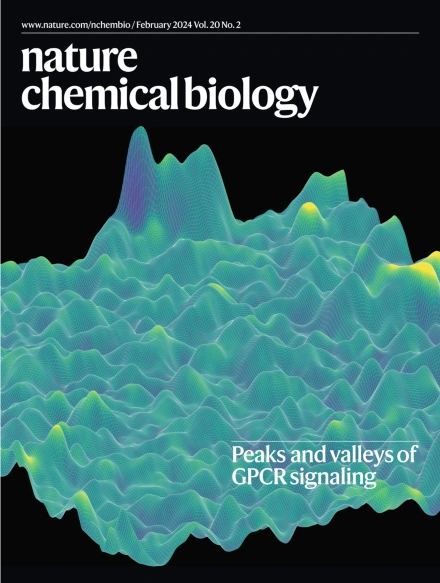抗聚集活性
IF 12.9
1区 生物学
Q1 BIOCHEMISTRY & MOLECULAR BIOLOGY
引用次数: 0
摘要
许多神经退行性疾病都会形成病理性蛋白质聚集,例如阿尔茨海默病患者体内的蛋白质 tau 聚集。清除这些聚集体为治疗这些蛋白质错误折叠疾病提供了一条可能的途径;然而,如何在靶向蛋白质聚集体的同时保留正常细胞功能所需的单体形式,仍然是一项挑战。现在,Benn、Cheng 等人的研究表明,将含 E3 连接酶的蛋白质与目标特异性纳米抗体融合,可以构建 RING-纳米抗体(R-Nb)降解器,从而靶向并选择性地清除聚集成蛋白质聚集体的蛋白质。研究小组推测,纤维状聚集体的结构可能使R-Nb降解因子密集聚集,从而激活降解途径,而单体tau不会诱导R-Nbs聚集,因此不会诱导降解。调整纳米抗体的亲和力也会影响聚类,从而提供另一种介导蛋白质降解的途径。本文章由计算机程序翻译,如有差异,请以英文原文为准。
Anti-aggregate activity
求助全文
通过发布文献求助,成功后即可免费获取论文全文。
去求助
来源期刊

Nature chemical biology
生物-生化与分子生物学
CiteScore
23.90
自引率
1.40%
发文量
238
审稿时长
12 months
期刊介绍:
Nature Chemical Biology stands as an esteemed international monthly journal, offering a prominent platform for the chemical biology community to showcase top-tier original research and commentary. Operating at the crossroads of chemistry, biology, and related disciplines, chemical biology utilizes scientific ideas and approaches to comprehend and manipulate biological systems with molecular precision.
The journal embraces contributions from the growing community of chemical biologists, encompassing insights from chemists applying principles and tools to biological inquiries and biologists striving to comprehend and control molecular-level biological processes. We prioritize studies unveiling significant conceptual or practical advancements in areas where chemistry and biology intersect, emphasizing basic research, especially those reporting novel chemical or biological tools and offering profound molecular-level insights into underlying biological mechanisms.
Nature Chemical Biology also welcomes manuscripts describing applied molecular studies at the chemistry-biology interface due to the broad utility of chemical biology approaches in manipulating or engineering biological systems. Irrespective of scientific focus, we actively seek submissions that creatively blend chemistry and biology, particularly those providing substantial conceptual or methodological breakthroughs with the potential to open innovative research avenues. The journal maintains a robust and impartial review process, emphasizing thorough chemical and biological characterization.
 求助内容:
求助内容: 应助结果提醒方式:
应助结果提醒方式:


